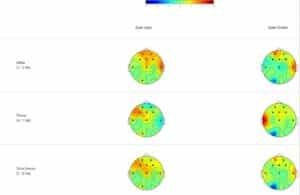Feeling Foggy, Anxious, and Unfocused After Screen Time?
Do you ever sit down for a quick scroll… and then realize an hour has vanished, your to-do list untouched, your mind foggy, and your heart anxious? You’re not alone—and you’re not broken. But your brain has been hijacked.
Digital addiction doesn’t just waste time. While you keep scrolling It silently rewires your brain—chipping away at focus, joy, and motivation. But there’s good news: you can rewire it back.
This is the story of one young man who did—and how you can too, step by step.
Step 1: Understand the Trap—And Why It’s Not Your Fault
Modern apps are built like slot machines. They’re designed to hook your dopamine system with:
- Intermittent rewards (likes, surprises, viral clips)
- Endless scrolling (no “stop” signal for your brain)
- Artificial validation (hearts and likes instead of real connection)
These features don’t just steal your time—they disrupt your neurochemistry. You crave more but feel worse.
💡Dr. Trish Leigh’s neuroscience Insight: Your brain’s reward circuit is stuck in a loop. The more you scroll, the harder it is to stop. That’s why willpower alone rarely works.
Step 2: See the Damage—With a Brain Map
One of our clients, a young man in his twenties, came to us exhausted from his scrolling habit. He felt anxious, foggy, and unmotivated.
We started with a qEEG brain map, which measures brainwave activity. His results showed a common pattern we call “Strained Brain”:
- Overactive high-frequency waves (wired but unfocused)
- Suppressed calming waves (no peace, poor sleep, low focus)
👉 Get your personalized qEEG brain map to discover exactly what your brain needs to heal.
📞 Or call us today at 919-301-9968 to speak with our team and take the first step.
Step 3: Rewire Your Brain—with Neurofeedback
The next step for our client was to start a personalized neurofeedback coaching journey, we began retraining his brain—reducing the chaotic high-frequency activity and restoring calm, focused energy. Over four months, the change was visible not only in how he felt—but in the brain data itself.
- The red line (representing his wired, overactive brain state) dropped steadily.
- The purple line (his tired, low-energy state) spiked briefly—then leveled out to a healthy, stable rhythm.
His mental clarity returned. His focus sharpened. And best of all, his compulsive urge to scroll disappeared. This young man now performs at peak levels—in his work, his relationships, and his confidence.
This is the power of personalized, neuroscience-backed brain training.

Disclaimer: The above image shows an example of a qEEG brain map assessment at random for privacy reasons.
Is Social Media Hijacking Your Brain?
Now is your turn to Ask yourself:
- Do you feel the urge to check your phone, even when you don’t want to?
- Do you feel foggy, unfocused, or anxious after screen time?
- Do likes or comments impact your mood more than they should?
If any of this sounds familiar, your brain may be stuck in a digital feedback loop—and it’s time to break free.
Grab a notebook and write down your screen habits.
What are you seeking?
When do you scroll?
What makes you feel “good”? And is that “good” feeling real—or just a momentary dopamine hit?
Ready to Reclaim Your Focus and Your Life?
You don’t have to do this alone. At Dr. Trish Leigh & Co, we specialize in helping people just like you understand their brains, heal their minds, and thrive again.
Your breakthrough is just one easy step away.
- Book your Brain Check Consultation now and start rewiring today.
- Still Have Questions? Contact us here!
🎥 Watch Dr. Leigh’s powerful video on beating social media addiction— It’s a must-watch if you’re serious about reclaiming your focus.

